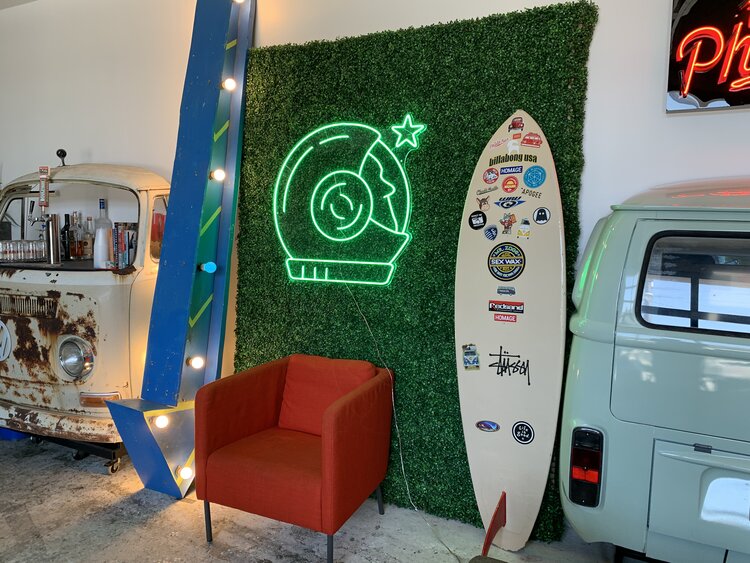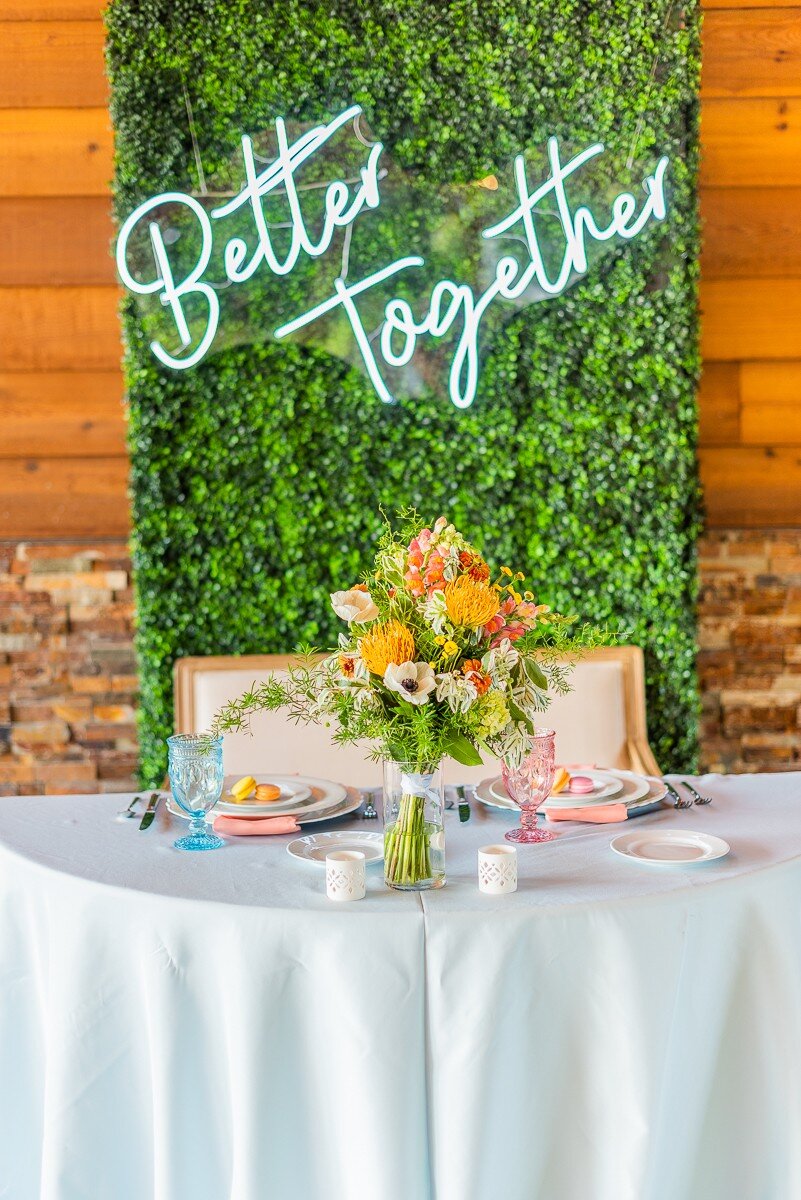Custom neon LED lights have become a widely recognized element in modern design, advertising, and personal expression. What once was reserved for storefronts and vintage diners has now found its way into homes, weddings, offices, and even social media content.
Unlike traditional neon sign made of fragile glass tubes and gas, custom LED neon signs use energy-efficient light-emitting diodes (LEDs) encased in flexible silicone or PVC tubing. This advancement makes them safer, longer-lasting, and easier to customize.
Their popularity isn’t just based on looks. Businesses are using custom neon LED lights to boost brand visibility, homeowners are decorating spaces with meaningful quotes or designs, and event planners rely on them to create unforgettable backdrops.
The market is responding in kind, with global LED demand continuing to rise thanks to its energy savings, low maintenance, and adaptability across many applications.
Whether you're a small business owner, interior designer, or just someone looking to enhance your space, understanding how these lights work — and why they’ve become so popular — can help you make smarter choices.
What are custom neon LED lights, how they work, and their rise?
In this guide, we will explain what custom neon LED lights are, how they function, and what’s behind their rising demand.
1. What Are Custom Neon LED Lights?
Custom neon LED lights are modern lighting fixtures that replicate the look of traditional neon lights using energy-efficient LED technology. Unlike traditional neon signs, which use gas-filled glass tubes, LED neon lights consist of flexible PVC or silicone tubing that houses LED strips. These lights are shaped into letters, logos, or artistic designs to meet personal or business preferences.
They are commonly used for signage, home decor, and event aesthetics. The key advantage is their ability to be tailored to specific designs. Customers can choose the font, size, color, and layout to reflect their branding or creative vision.
These lights are mounted on acrylic or metal backboards for stability and easy installation. The result is a bright, safe, and customizable lighting solution.
2. How Do Custom Neon LED Lights Work?
The working mechanism of LED neon lights is based on surface-mounted diode (SMD) technology. Here’s how it works:
-
LED Strips: The core component is the LED strip, composed of multiple tiny diodes that emit light when an electric current passes through them.
-
Tubing: This strip is enclosed in a colored or clear silicone or PVC tube, which diffuses the light to create a soft, uniform glow.
-
Power Supply: A transformer or adapter is used to convert AC power from a wall socket into the DC power needed for the LEDs.
-
Control Options: Some LED neon signs include dimmers, remote controls, or even smart-home integration for lighting effects.
This structure allows LED neon lights to operate at low voltages, making them energy-efficient and safe for indoor and outdoor use.
3. Why Are Custom Neon LED Lights Gaining Popularity?
The increasing popularity of custom neon LED lights can be attributed to several practical and economic factors:
-
Energy Efficiency: LEDs consume up to 80% less energy than traditional neon.
-
Long Lifespan: Most LED neon lights last up to 50,000 hours, significantly more than the 10,000 hours typical of traditional neon.
-
Durability: LED neon signs are made from shatterproof materials, unlike fragile glass tubes.
-
Affordability: Lower operating and maintenance costs make LED neon a more economical long-term option.
-
Customization: Businesses and individuals can design their own signs with a range of fonts, colors, and shapes.
-
Portability: Light weight and simple installation allow these lights to be moved and reused.
These benefits have made LED neon lights a preferred choice for both commercial and personal use.
4. Real-World Applications: Who’s Using Them and Why?
Custom neon LED lights are widely used across various sectors due to their flexibility and visual appeal:
-
Retail Stores: Businesses use LED neon signs for promotional messages, logos, and branding.
-
Restaurants and Bars: These lights enhance ambiance and attract attention with vibrant colors.
-
Weddings and Events: Custom phrases and names create memorable backdrops.
-
Home Decor: Popular in bedrooms, living rooms, and gaming setups for aesthetic appeal.
-
Offices and Workspaces: Used for motivational quotes or company branding.
Their ability to serve both functional and decorative purposes makes them suitable for a wide range of environments.
5. Environmental and Safety Advantages
LED neon lights offer significant environmental and safety benefits:
-
Low Energy Consumption: Reduced electricity usage helps lower carbon footprints.
-
No Toxic Gases: Unlike traditional neon, LED signs don’t use mercury or argon.
-
Low Heat Emission: LEDs emit minimal heat, reducing fire risks.
-
Safe Materials: Made from flexible plastics rather than breakable glass.
-
Quiet Operation: No humming sound that is common in traditional neon signs.
These qualities make them ideal for homes with children, crowded public spaces, and areas with strict safety regulations.
6. Manufacturing and Installation Process
The creation and installation of custom neon LED lights follow a structured process:
-
Design Phase: Customers provide design specs or choose from templates. Design software translates these into cutting paths.
-
Material Selection: Suitable tubing and LED strips are chosen based on color and size preferences.
-
Assembly: LED strips are inserted into the tubing, which is then shaped and fixed to the backing board.
-
Testing: Completed units are tested for brightness, power efficiency, and durability.
-
Packaging and Shipping: Signs are packaged securely to prevent damage during transit.
Installation Methods:
-
Wall-mounting with screws or adhesive strips
-
Hanging using chains or wire
-
Free-standing on a custom base
Most signs include plug-and-play adapters, making installation user-friendly.
7. Challenges and Limitations
While LED neon lights offer many advantages, they are not without limitations:
-
Brightness Levels: While bright, they may not be suitable for large-scale outdoor displays in direct sunlight.
-
Waterproofing: Not all models are fully waterproof; outdoor use requires IP-rated products.
-
Design Limitations: Extremely thin or complex designs may be difficult to replicate precisely.
-
Color Fading: Over time, exposure to UV light can cause colors to fade, especially in low-quality models.
-
Initial Cost: High-quality custom designs may have a higher upfront cost compared to mass-produced lights.
Understanding these limitations can help users make informed decisions based on their specific needs.
8. Future of Neon LED Lights
The future of custom neon LED lights is promising, driven by technological advancements and consumer demand:
-
Smart Integration: Expect more signs with Bluetooth and Wi-Fi control, compatible with voice assistants.
-
Enhanced Materials: Ongoing R&D is producing more weather-resistant and UV-stable materials.
-
Eco-Friendly Options: Manufacturers are exploring recyclable components and more sustainable production methods.
-
Improved Customization Tools: Online platforms now offer 3D previews and augmented reality tools to visualize signs.
-
Wider Adoption: Increased use in digital marketing, streaming setups, and interactive displays.
These developments will likely expand the reach and functionality of neon LED technology in the coming years.
Q&A Section
Q: Are LED neon signs expensive to run? A: No, they consume significantly less power than traditional neon signs.
Q: Can I install a custom LED neon sign myself? A: Yes, most signs come with plug-and-play functionality and simple mounting options.
Q: Are they safe for children’s rooms? A: Yes, they operate at low voltages and don’t emit heat or use toxic materials.
Q: How long do they last? A: Typically up to 50,000 hours with regular use.
Q: Can I use them outdoors? A: Yes, but ensure the product is rated for outdoor use (IP65 or higher).
Conclusion
Custom neon LED lights have successfully bridged the gap between classic aesthetics and modern functionality. They replicate the charm of traditional neon signs while offering energy efficiency, safety, durability, and customization that today’s users demand. From retail branding to home decor, these lights serve practical purposes without compromising on design or reliability.
Their ease of installation and low maintenance requirements make them accessible to individuals and businesses alike, while their adaptability to indoor and outdoor settings extends their usability.
While challenges such as UV exposure and design limitations exist, they are outweighed by the long lifespan, eco-friendly operation, and cost-effective performance that LED neon lights provide. As technology continues to evolve, innovations like smart features and sustainable materials will only add to their appeal.
For anyone looking to enhance visibility, ambiance, or personal expression through lighting, custom neon LED lights represent a smart, modern solution. Whether you're lighting up a store window or your bedroom wall, they offer a safe and stylish way to stand out.
In short, custom neon LED lights are here to stay — combining innovation, energy savings, and personalization in one versatile product.




